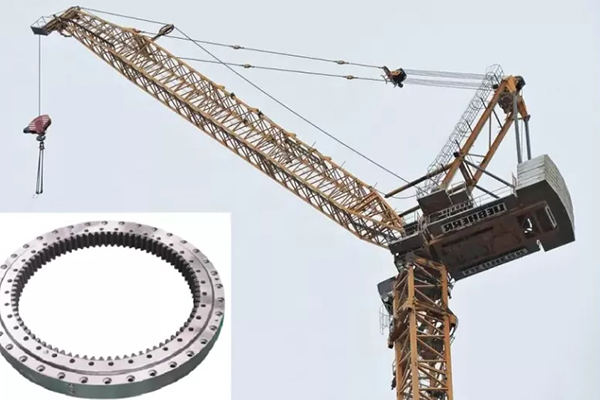
What Are the Applications of Slewing Ring?
2024-11-27
A slewing ring, also known as a slewing bearing, is an essential component in many industries due to its ability to support heavy loads while enabling rotational movement. Its unique design allows it to combine axial, radial, and tilting moment loads compactly and efficiently. This article explores the various applications of slewing rings, with a particular focus on their use in cranes.
1. Understanding the Slewing Ring
A slewing ring is a type of bearing that consists of an inner ring, an outer ring, and rolling elements such as balls or rollers. This configuration allows for smooth rotational movement between the two rings. Slewing rings are used in machinery that requires the rotation of heavy equipment, making them indispensable in fields such as construction, manufacturing, renewable energy, and transportation.
2. Applications of Slewing Rings in Cranes
The slewing ring is an integral part of cranes, providing the rotational mechanism needed for efficient operation. Here are some specific examples:

Tower Cranes
Tower cranes rely on slewing rings to rotate their jib (horizontal arm) around the mast. This allows the crane to maneuver materials across a wide radius. The slewing ring in a tower crane must handle heavy loads and resist various forces, such as wind and dynamic stresses, ensuring stability and safety during operation.
Mobile Cranes
Mobile cranes, often used in construction and logistics, require slewing rings for their superstructures to rotate. This enables the crane to lift and place loads in multiple directions without repositioning the entire vehicle. The compact yet robust design of the slewing ring is critical for the crane’s mobility and functionality.
Offshore Cranes
Slewing rings are essential in offshore cranes, which operate in harsh marine environments. They allow the crane to rotate smoothly while withstanding high loads and environmental stresses like saltwater corrosion and wave-induced motion. Offshore cranes rely on these bearings to ensure efficient and reliable operation in demanding conditions.
3. Other Key Applications of Slewing Rings
Beyond cranes, slewing rings are utilized in a wide range of industries and equipment:
Wind Turbines
In wind turbines, slewing rings are used to adjust the angle of the blades (pitch control) and to orient the nacelle (yaw control) in response to wind direction. These bearings are crucial for maximizing energy efficiency and maintaining structural integrity.
Excavators
Slewing rings enable the rotation of the upper structure of excavators, allowing the operator to dig and load material efficiently. This capability enhances the machine’s versatility and operational speed.
Robotics
In robotic systems, slewing rings provide precise rotational movement for components like robotic arms. Their accuracy and durability make them ideal for high-performance applications in automation and manufacturing.
Medical Equipment
Slewing rings are also used in medical devices, such as CT scanners, where smooth and precise rotational movement is required for accurate imaging.
4. Advantages of Using Slewing Rings
The widespread application of slewing rings can be attributed to their numerous advantages:
- Compact Design: Slewing rings integrate multiple load-bearing capabilities into a single unit, saving space and reducing weight.
- Durability: Designed to withstand heavy loads and harsh conditions, slewing rings offer long-lasting performance.
- Versatility: They are available in various sizes and configurations, making them suitable for a wide range of applications.
- Ease of Maintenance: Many slewing rings are designed with easy-to-access lubrication points, ensuring smooth operation with minimal maintenance.
5. Conclusion
Slewing rings are indispensable components in modern machinery, enabling smooth and reliable rotational movement in a variety of applications. Their use in cranes, such as tower cranes, mobile cranes, and offshore cranes, highlights their ability to handle heavy loads while maintaining precision and durability. As technology advances, the versatility and efficiency of slewing rings continue to expand, solidifying their role in industries ranging from construction and energy to robotics and healthcare.
In the context of cranes, the slewing ring remains a cornerstone of design and functionality, ensuring these machines perform their tasks safely and effectively. With their adaptability and robustness, slewing rings are poised to remain a critical element in industrial innovation for years to come.





